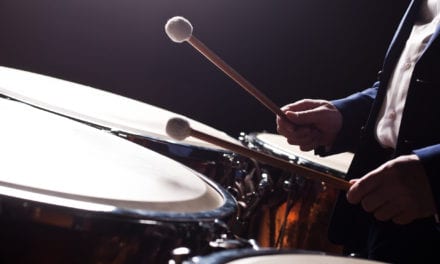By Doug Elmore
It may seem overly simplistic, but many times when I have adjudicated an orchestra at festival or been watching and listening in the audience to a student orchestra performance, (and I have run that little mental checklist we as musicians sometimes run) the orchestra doesn’t sound good. By which I mean, they don’t SOUND good. The string players aren’t producing that rich, vibrant, characteristic sound associated with a wonderful student orchestra.
I certainly understand the issue! As string teachers, we are drowning in minutiae…classroom management issues, equipment issues, left hand issues, learning the notes and rhythms; recruiting, programming concert literature….the list is endless. It certainly is possible to put tone development on a back burner inadvertently…BUT, if one is to lead their students to great tone quality, it has to be made a priority by you, the teacher.
In our warm-up time, which occurs every day in our middle school classes, there are three things I try to prioritize with my students, going all the way back to the fifth grade beginner’s classes. First, we spend a LOT of time in middle school classes on forming a well-shaped bow hand. Much emphasis is put on the bent thumb, or “thumb bump”, with thanks to Robert Gillespie, co-author of Essential Elements for Strings. Second, we put a lot of emphasis on “bowing lanes,” or the concept of tracking the bow specifically in a certain spot on the string. The third key is: I try to instill in my students is the feeling in the bow hand of weight. The right arm should be relaxing and hanging from the bow, and consequently, transferring arm weight onto the string.
All these factors converge when our orchestra warms up every day. We play 5-note scale patterns in the middle of the bow, at the tip of the bow, and near the frog. We play them in 16th note rhythms, 8th note rhythms, dotted rhythms, and in any common rhythm patterns that are featured in our literature. All these warm-ups are executed with an ear for tone. I often ask the students to evaluate their bow usage, evaluate that of their stand partners, and the orchestra as a whole. The final judge of tone quality in rehearsals, however, is the director. The students are often just too occupied with pitch, rhythm, and dynamic issues to also focus on tone. In a recent rehearsal cycle of a local youth orchestra that I conduct, I was addressing bow placement and bow usage (frog, middle, or tip? Heavy weight, light weight, medium weight? Fast bow, slow bow, medium bow?) in “Russian Sailors Dance “…all the way up to the day of dress rehearsal! If the director doesn’t make it a priority, the students won’t, either. I am happy to report, however, that the students played with outstanding tone that day!
As the students age upward into high school, I try to emphasize every day the concept of matching tone with one’s stand partner, then section, then orchestra. (This, of course, demands a higher level of awareness on the part of the student!) Again, the director has to be deeply involved in the process, as some students come to “tonal awareness” sooner than others. In most rehearsals, I am constantly asking, “Are you in the same part of the bow as your stand partner? As your section leader? As the cellos? (or whoever) If not, why not?
Often, if I see an issue with tone or bowing ahead of time, I will mark in the music before passing it out “Frog!” “Middle!” “Fast bow, light weight” “Near bridge”, just to remove any ambiguity on the part of the student. If the orchestra doesn’t CLEARLY know what the director is looking for, they probably won’t be able to give it to you.
In closing, it’s important for me to say how wonderfully committed most kids are to playing beautiful music together. They have given us as teachers the greatest gift I can think of: an hour a day of their lives! What we as teachers and students choose to do with that hour every day is completely up to us. With careful rehearsal planning and time budgeting, great things are possible.


